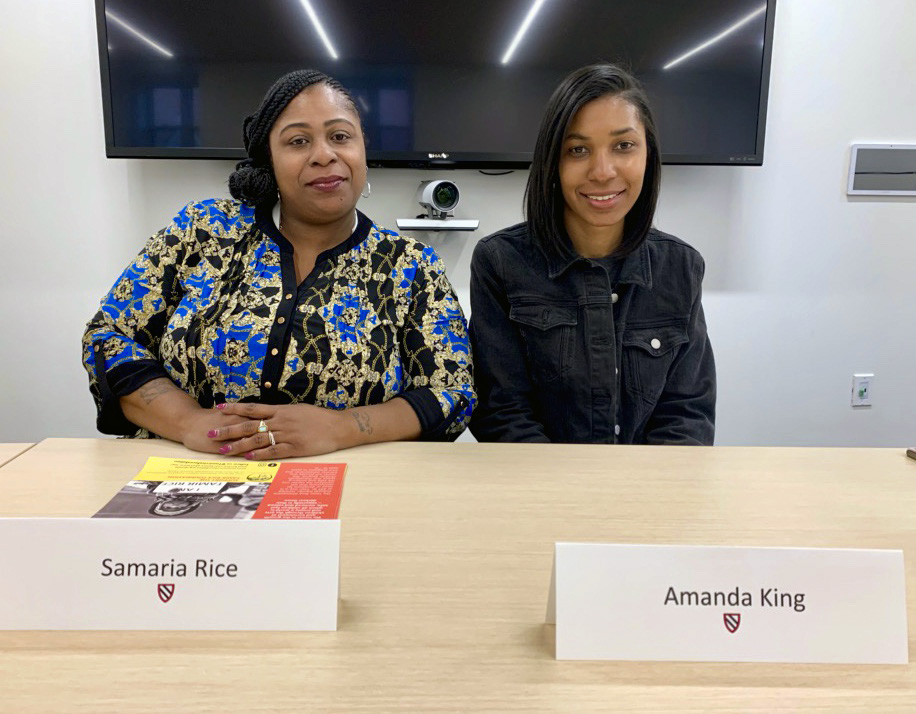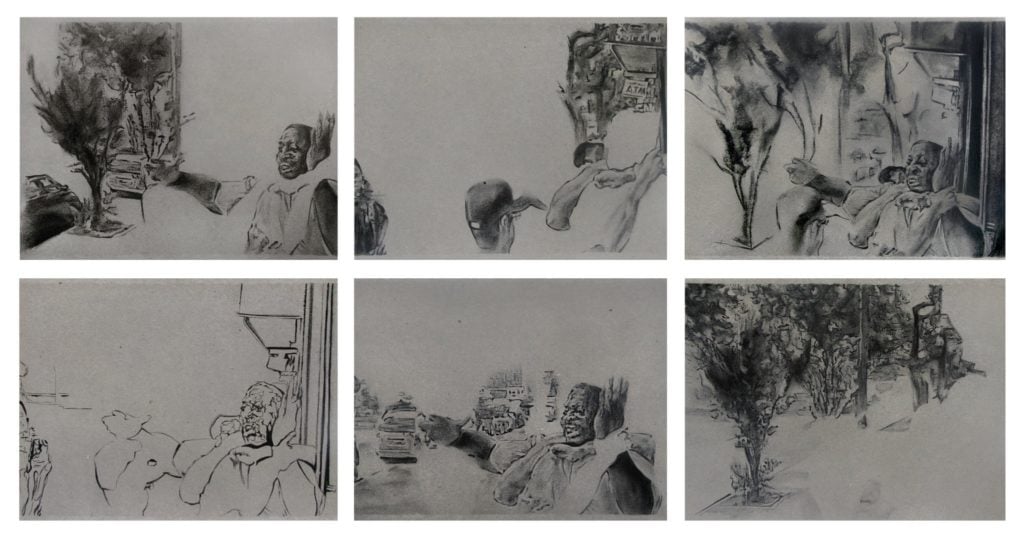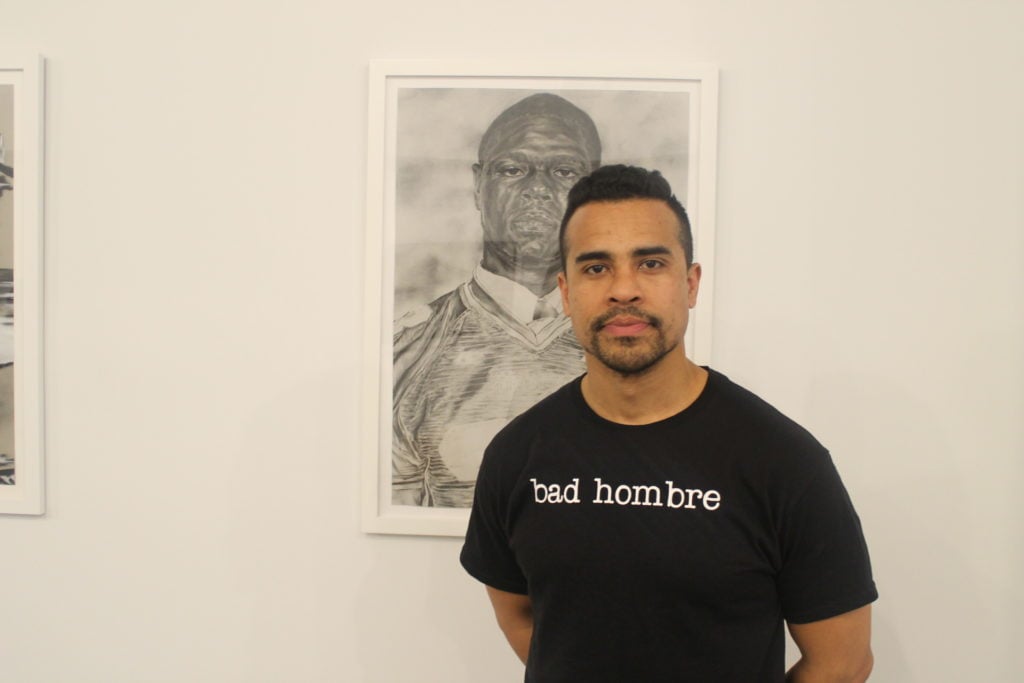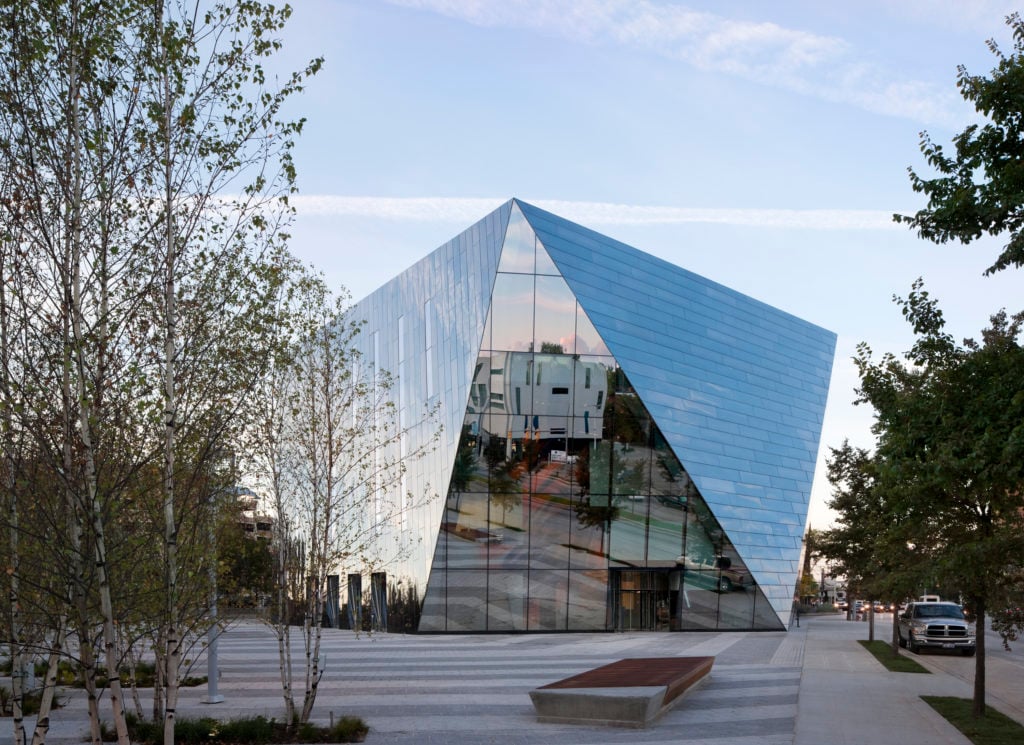When artist Shaun Leonardo released a statement last month accusing the Museum of Contemporary Art, Cleveland, of censorship, few were more surprised than Cleveland-based artist and activist Amanda King.
Last February, she raised her concerns to the institution’s senior staff that the work in Leonardo’s exhibition, which depicts scenes of police officers killing African American and Latino men, could be traumatizing for a community where 12-year-old Tamir Rice was killed by a police officer in 2014, and where his mother, Samaria Rice, still lives. (King and Rice are working together to create the Tamir Rice Afrocentric Cultural Center, a space for artistic, cultural, and civic programming for Cleveland youth.)
After the controversy around the show ignited last month, Rice issued a cease and desist letter to Leonardo asking him to refrain from showing the work that draws on her son’s death and to remove it from his website. “She is very concerned that work like this reduces who Tamir was to a horrific moment that alone does not define him,” King says.
Now, King and another local curator say the narrative around the show has been unfairly flattened and that their objections have been pushed to the margins. At a time when museums are being called to reconsider how they engage with both their publics and issues of racial justice, the ultimately-cancelled Leonardo show illustrates that there is still a lack of consensus about best practices in dealing with such difficult material.

Samaria Rice and Amanda D. King at a talk at Radcliffe College, April 2019.
King notes that the show had the potential to land very differently in Cleveland than it had in other cities, including Baltimore, where it had been shown without incident. Cleveland is under what is called “consent decree,” an agreement between local authorities and the US Department of Justice to reform law-enforcement practices following a long history of police brutality.
“There’s a historical context that goes further beyond the murder of Tamir Rice into a whole bevy of things from the militarization of the police to political disenfranchisement of activists who speak out against the police,” King says. “So this is a loaded thing for city.” (Samaria Rice did not respond to Artnet News’s request for comment; King said she often acts as her spokesperson.)
When Leonardo spoke up about the cancellation following the death of George Floyd, he told the that he had “never had a moment to engage any community member regarding the show.” But King says that while she never interacted with Leonardo directly, MoCA did ask her to deliver a letter from Leonardo to Rice in response to her inquiry about the exhibition. (Artnet News has not seen a copy of the letter; King says it reiterated much of what was in the artist’s original proposal.) Neither woman was convinced by the letter, according to King. She says she reached out to express her profound discomfort with the project a few days after it was announced on the museum’s website; a few weeks later, it was called off.

Shaun Leonardo, , 2015. Courtesy the artist.
After the cancellation became public, MoCA’s then-director Jill Snyder apologized for making the decision without “expand[ing] the conversation within our community” beyond “prominent voices in the activist community” and “not engag[ing] Mr. Leonardo in creating space for dialogue and debate.”
King found Snyder’s remarks, which did not mention her by name, “very offensive, especially when Samaria Rice and myself are actively engaged in the community, both in the arts and around issues of state-sanctioned violence.” (Snyder announced her resignation on June 19, around 10 days after the controversy erupted in the press.)
By reducing the situation to “this black-white narrative,” King says, the museum repackaged the controversy into a trope of a white institution censoring a Black artist, instead of discussing “the moral implications of how even Black artists, in some regard, can get it wrong.”

Shaun Leonardo with his work at Recess. Courtesy Recess.
While she acknowledges the need to reckon with state-sanctioned violence, King advocates for “an ethic of care [within that] that I did not see in [Leonardo’s] work” or within the museum’s programming. Museums like MoCA, she cautions, “want to get on the Black Lives Matter bandwagon, but do not have the infrastructure, or historical contacts, or any frameworks by Black intellectuals to help… navigate that process.”
La Tanya Autry, a curatorial fellow at MoCA, regarded the museum’s apology as “anti-Black racism, to say that we talked to some Black people but not enough Black people.” She deemed it “a way to get Black community members fighting amongst themselves, then taking the emphasis away from the real issue of lack of competence at the museum.”
Autry said she was not proactively consulted about the show, although she has been working at MoCA as a curatorial fellow since March. When she mentioned her concerns to senior staff after viewing Leonardo’s images, citing her years-long study of depictions of Black pain and death, they dismissed her, she said.

MOCA Cleveland’s Farshid Moussavi-designed building. Photo by Dean Kaufman.
MoCA Cleveland declined to comment for this story. Leonardo referred an inquiry to his lawyer, who said: “Shaun’s art presents important issues in nuanced and sometimes difficult ways. We are working with the Rice family attorneys to ensure that artistic expressions of newsworthy events can be undertaken. Shaun remains firm in his belief that art exists to challenge and thereby encourage difficult and necessary conversation and debate.”
In the end, King notes, Leonardo is able to “walk away from the situation” after getting “clout from being censored for a police brutality show by a white institution.” Meanwhile, MoCA, she contends, has not used the controversy “to think more deeply about the ethical implications of representation.”
For her part, King says she was simply trying to protect a community from witnessing how others often look at a Black body: “as a corpse, before seeing it as a person.”
Source: Exhibition - news.artnet.com



